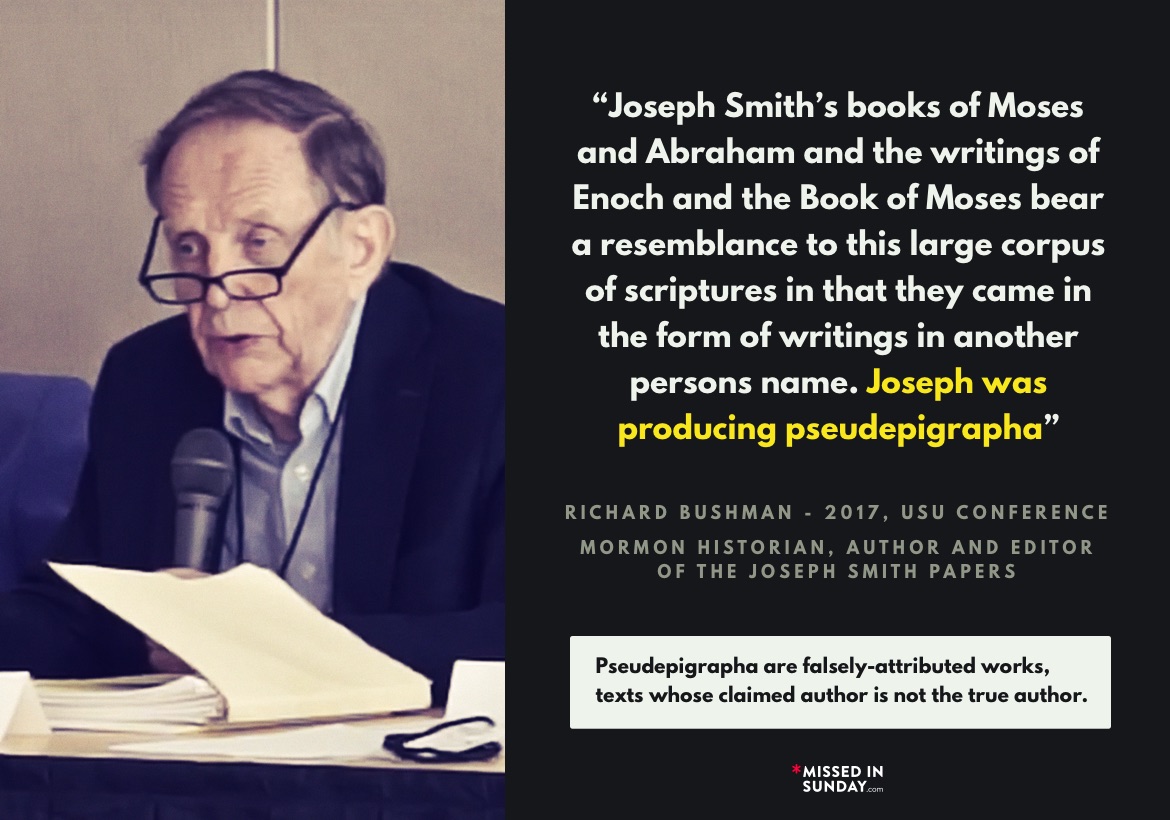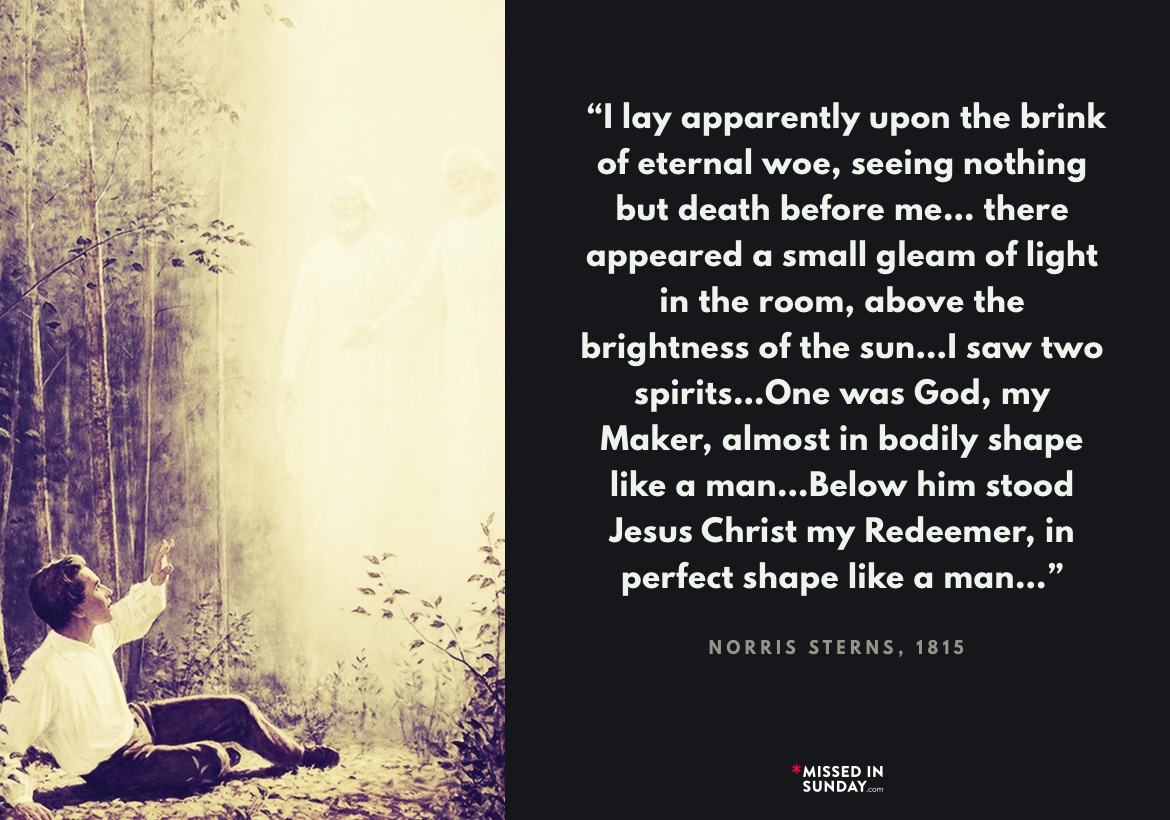Image: Richard Lyman Bushman (born June 20, 1931) is an American historian and Gouverneur Morris Professor of History emeritus at Columbia University. He was the Howard W. Hunter Visiting Professor in Mormon Studies at Claremont Graduate University from 2008 to 2011. He also serves as one of three general editors of the Joseph Smith Papers.
Richard Lyman Bushman, New Perspectives on Joseph Smith and Translation – Utah State University March 16th, 2017: History and Context—Richard Bushman
From a modern scholarly perspective, Moses along with a later translation of the Book of Abraham, looks less like a translation of the Bible, than a major variant of a second major translation project in the 19th century, the recovery and analysis is pseudepigrapha.
These scripture like texts, now numbering in the hundreds, were taken seriously during the first centuries of the Christian era when they jostled for inclusion in the Christian and Jewish canons. They were wanted to be scriptures. They didn’t quite make the grade, but still hung around in various forms. These are writings that had a biblical ring and echoed biblical themes, but for reasons both theological and political, did not make it into the canon. The Bible as we know it. They were called pseudepigrapha because they oftened pretended to be authored by a biblical figure and spoke in that prophets voice. Though the actual author, of the writing, was unknown. They had names like the Apocryphal Set. The Inquiry of Abraham. The Testament of Job. The Apocryphal of Ezekiel.
Joseph Smith’s books of Moses and Abraham and the writings of Enoch and the Book of Moses bear a resemblance to this large corpus of scriptures in that they came in the form of writings in another persons name. Joseph was producing pseudepigrapha at the very time when scholars were taking these writings seriously again. Interested Pseudepigrapha had faded out in the 3rd and 4th centuries of the Christian era after the canon settled in. And revived in the renaissance as part of the return to antiquity for wisdom and science. Over the course of the 19th century, translation and study of pseudepigrapha became a major scholarly endeavor.
Wikipedia definition of Pseudepigrapha
Pseudepigrapha (also anglicized as “pseudepigraph” or “pseudepigraphs”) are falsely-attributed works, texts whose claimed author is not the true author, or a work whose real author attributed it to a figure of the past. Pseudepigraphy covers the false ascription of names of authors to works, even to authentic works that make no such claim within their text. Thus a widely accepted but incorrect attribution of authorship may make a completely authentic text pseudepigraphical. Assessing the actual writer of a text locates questions of pseudepigraphical attribution within the discipline of literary criticism.
Richard Lyman Bushman, New Perspectives on Joseph Smith and Translation – Utah State University March 16th, 2017 (video) History and Context—Richard Bushman
Crash Course:
History and Context (video)—Richard Bushman
Translation and Historicity of the Book of Abraham – LDS Gospel Topic Essay
Response to the Translation and Historicity of the Book of Abraham – Robert K. Ritner
The Joseph Smith Papyri (Video) – An explanation and overview of the Joseph Smith Papyri and their connection with Mormon scripture.


